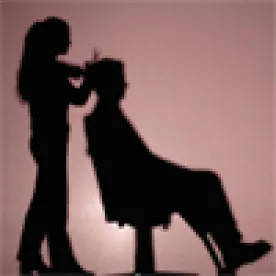The New York City Commission on Human Rights published legal enforcement guidance defining an individual’s right to wear “natural hair, treated or untreated hairstyles such a , cornrows, twists, braids, Bantu knots, fades, Afros, and/or the right to keep hair in an uncut or untrimmed state.” The guidance applies to workplace grooming and appearance policies “that ban, limit, or otherwise restrict natural hair or hairstyles”:
 While an employer can impose requirements around maintaining a work appropriate appearance, [employers] cannot enforce such policies in a discriminatory manner and/or target specific hair textures or hairstyles. Therefore, a grooming policy to maintain a ‘neat and orderly’ appearance that prohibits locs or cornrows is discriminatory against Black people because it presumes that these hairstyles, which are commonly associated with Black people, are inherently messy or disorderly. This type of policy is also rooted in discriminatory stereotypes about Black people, and racial stereotyping is unlawful discrimination under the [New York City Human Rights Law
While an employer can impose requirements around maintaining a work appropriate appearance, [employers] cannot enforce such policies in a discriminatory manner and/or target specific hair textures or hairstyles. Therefore, a grooming policy to maintain a ‘neat and orderly’ appearance that prohibits locs or cornrows is discriminatory against Black people because it presumes that these hairstyles, which are commonly associated with Black people, are inherently messy or disorderly. This type of policy is also rooted in discriminatory stereotypes about Black people, and racial stereotyping is unlawful discrimination under the [New York City Human Rights Law
A grooming or appearance policy prohibiting natural hair and/or treated/untreated hairstyles to conform to the employer’s expectations “constitutes direct evidence of disparate treatment based on race” in violation of the City’s Human Rights Law. Examples of such policies include:
- A grooming policy prohibiting twists, locs, braids, cornrows, Afros, Bantu knots, or fades which are commonly associated with Black people.
- A grooming policy requiring employees to alter the state of their hair to conform to the company’s appearance standards, including having to straighten or relax hair (, use of chemicals or heat).
- A grooming policy banning hair that extends a certain number of inches from the scalp thereby limiting Afros.
Workplace policies prohibiting natural hair and/or treated/untreated hairstyles may not be implemented “to promote a certain corporate image, because of a customer preference, or under the guise of speculative health or safety concerns.” Where there is a legitimate health or safety concern, alternative ways to address the concern (e.g., hair ties, nets, head coverings and alternative safety equipment) must be considered before imposing a ban or restriction on the employee’s hairstyle.
Employers within New York City should review their workplace grooming and appearance policies to ensure compliance with the newly issued legal enforcement guidance.



 />i
/>i

